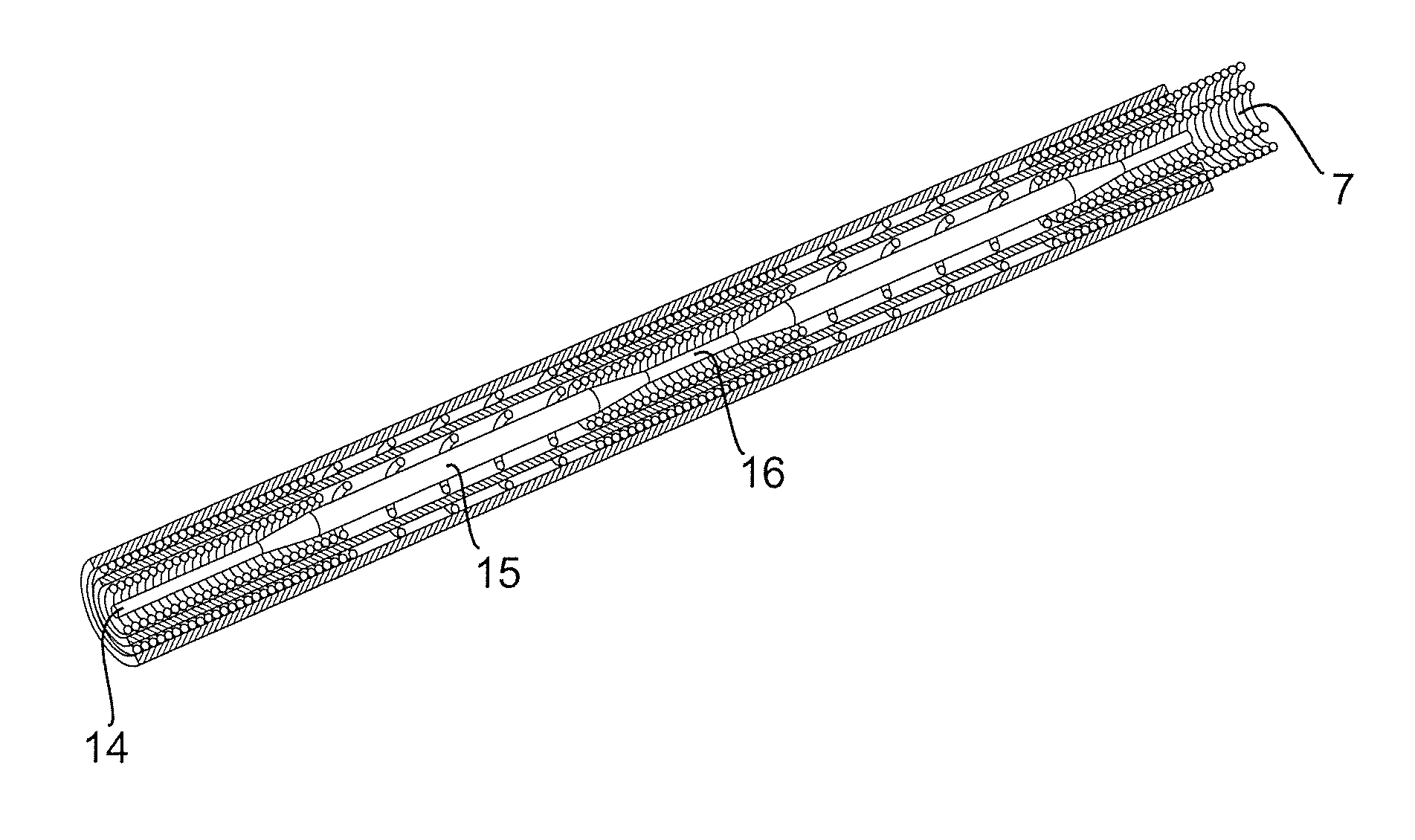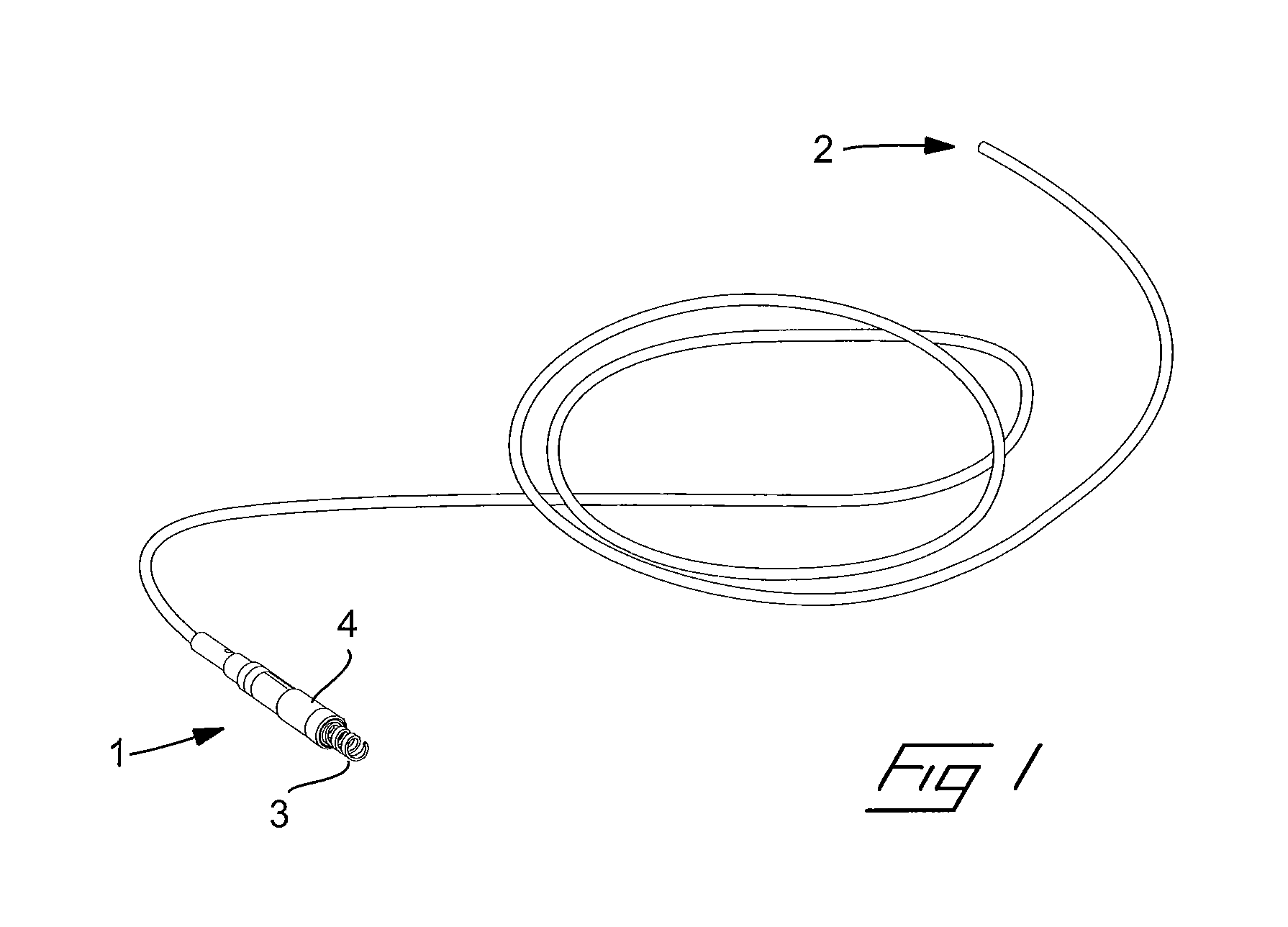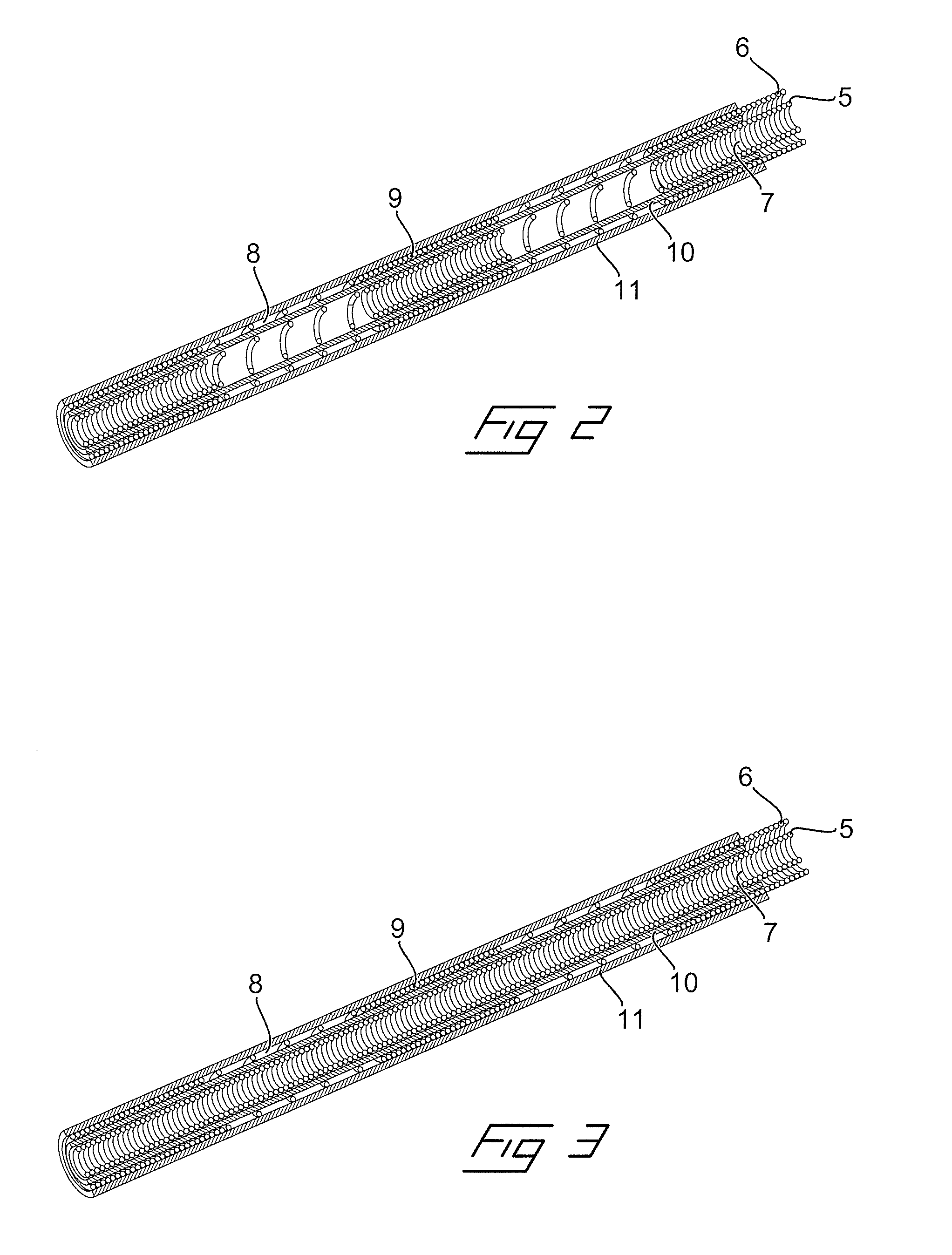Medical lead assembly and method for implantation thereof
a technology of medical lead and assembly, which is applied in the direction of internal electrodes, transvascular endocardial electrodes, therapy, etc., can solve the problems of lead fracture risk, lead stiffness decrease, and severe injuries, so as to reduce the degree of fracture, increase the stiffness, and the effect of different stiffness
- Summary
- Abstract
- Description
- Claims
- Application Information
AI Technical Summary
Benefits of technology
Problems solved by technology
Method used
Image
Examples
first embodiment
[0029]In FIGS. 2 and 3 are schematically illustrated two different embodiments of a new type of an implantable electrical lead, which are especially adapted for being compatible with MRI-fields. This has been achieved by arranging at least one of the outer and inner wire coils with alternating tightly wound coil sections 8 and loosely wound coil sections 9 having carefully adapted lengths and interrelation. In FIG. 2 is illustrated a first embodiment where both the inner wire coil 5 as well as the outer wire coil 6 are formed with alternating loosely wound coil sections 8 and tightly wound coil sections 9. In the embodiment in FIG. 3 on the other hand, only the outer wire coil 6 is formed with alternating loosely wound and tightly wound coil sections. The inner and outer wire coils are separated by inner and outer flexible tubes 10 and 11, respectively.
second embodiment
[0030]In both of these embodiments, the inner wire coil 5 is defining an inner lumen 7, into which a guide wire can be inserted for guiding the lead during implantation. This is illustrated in FIG. 4, where a lead having an entirely tightly wound inner coil 5, is shown with a straight guide wire 12 inserted in the lumen. This straight guide wire can be used when passing the lead through a vein into the heart. When the distal end of the lead is positioned inside a chamber of the heart, the straight guide wire can be retracted and a curved guide wire 13 having a preformed curve in the distal end, as shown adjacent the lead, can be inserted into the lumen. By rotating the lead with the curved guide wire inside, the distal end of the lead can be pivoted such that its tip abuts against heart tissue at a desired location and then the helix is rotated and hence screwed into the tissue for attachment.
[0031]One disadvantage with an implantable lead being formed with loosely wound coil secti...
PUM
 Login to View More
Login to View More Abstract
Description
Claims
Application Information
 Login to View More
Login to View More - R&D
- Intellectual Property
- Life Sciences
- Materials
- Tech Scout
- Unparalleled Data Quality
- Higher Quality Content
- 60% Fewer Hallucinations
Browse by: Latest US Patents, China's latest patents, Technical Efficacy Thesaurus, Application Domain, Technology Topic, Popular Technical Reports.
© 2025 PatSnap. All rights reserved.Legal|Privacy policy|Modern Slavery Act Transparency Statement|Sitemap|About US| Contact US: help@patsnap.com



